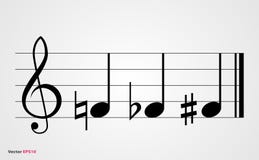
:max_bytes(150000):strip_icc()/sharpsandflats-5b4ccd3a46e0fb005bdafcf0.jpg)
So how do you decide whether to call it a sharp or a flat? That depends on the situation. Only sharps are used in Figure 1, and only flats in Figure 2.

The diagram below shows two ways to depict all 12 notes of an octave, starting from a C.

Simply put, “enharmonic equivalence” means to describe one note in two ways. But, couldn’t C♯, which is also one fret lower from the D, also be called a D♭? That’s right-and it’s because of “enharmonic equivalence.” Enharmonic equivalence There are three sharps and two flats in-between the naturals, starting with a C# one fret up from the C. Here are all the sharps and flats in-between the notes of the C major scale: In the diagram above, all the notes are laid out just as they would on a fretboard. So, for instance, a C♯ is one semitone higher (or one fret up) than a C, and a D♭ is one semitone lower (or one fret down) than a D. They appear as suffixes to natural notes: A sharp is one semitone higher in pitch, while a flat is one semitone lower. Sharps and flats are two groups of notes that differ from natural ones (C, D, E, F, G, A and B).


 0 kommentar(er)
0 kommentar(er)
